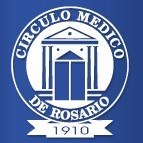Coronavirus:
nueva pandemia
Keywords:
Coronavirus, Epidemiology, PandemicAbstract
Considered an emerging infectious disease, the coronavirus pandemic, new COVID-19, arose in Wuhan City, Hubei Province, China and arrived in our country on March 2, 2020. It spread rapidly throughout the world and caused thousands of deaths, which generated an avalanche of information not always truthful. This note tries to gather the evidence that serves the physician and the health team. COVID-19 is an RNA+ that belongs to the beta group of the Family Coronaviridae. The virus enters mainly by inhalation, it binds to receptors of the cells of the respiratory epithelium in which it replicates. The disease may be mild, but in older patients, especially those with co-morbidities, it can cause severe pneumonia. The case fatality rate appears to be higher than that of influenza. Medications that inhibit replication are under study, as are several vaccine protocols. This virus is not the only health problem due to infectious diseases or other non-infectious epidemiological causes in our country. Currently several diseases with similar clinical conditions and febrile syndrome currently coexist in the same territory, thus generating greater challenges for the physician when evaluating a patient. Thanks to correct measures taken early, in Argentina the number of cases is, for the moment, lower than in other countries. The instructions of the Ministerio de Salud and the World Health Organization must be strictly followed.
Downloads
References
Oromí-Durich J. Enfermedades emergentes y reemergentes: algunas causas y ejemplos. Med Integr 36:79-82,2000.
Zu YZ, Jiang M D, Xu PP y col. Coronavirus disease 2019 (COVID-19): a perspective from China. Radiology Online antes de imprenta, Feb 21:200490, 2020.
Yang X, Yu Y, Xu J y col. Clinical course and outcomes of critically ill patients with SARS-CoV-2 pneumonia in Wuhan, China: a single-centered retrospective, observational study https://www.thelancet.com/journals/lanres/article/PIIS2213-2600(20)30079-5/fulltext Lancet Respir Med, 2020.
Murray P. Microbiologia médica. 8th ed. Elsevier ed. Cap 58 pag 591. Madrid, 2017
Ena J, Wenzel RP. Un nuevo coronavirus emerge. Rev Clin Esp.220:115-6, 2020
Notario R. Microbiología para el Médico. 2ª edición. UNR Ed. Rosario, 2012.
Lai CC, Liu YH, Wang CY y col. Severe acute respiratory syndrome coronavirus 2 (SARS-CoV-2) and coronavirus disease-2019 (COVID-19): the epidemic and the challenges. Int J. Antimicrob Agents,55:105924, 2020.
Rickerts T, Wolf C. Rottmann, W y col. Klinik und Behandlung des schweren akuten respiratorischen Syndroms. Dtsch med Wochenschr.128:1109-1114, 2003
Mizutani T. A novel coronavirus, MERS CoV. Uiruzu.63:1-6, 2013.
Rodriguez-Morales AJ, Gallego V, Escalera-Antezana JP y col. COVID-19 in Latin America: the implications of the first confirmed case in Brazil. Travel Med Infect Dis.Feb 29:101613, 2020.
González García G. Conferencia de prensa del Ministerio de Salud. República Argentina. 02/03/2020 https://www.youtube.com/watch?v=p7IGtJ6MpGU, 2020.
van Doremalen N, Bushmaker T, Morris DH y col. Aerosol and surface stability of SARS-CoV-2 compared with SARS-CoV-1. N Engl J Med.Mar17, 2020.
Guo YR, Cao QD, Hong ZS y col. The origin, transmission and clinical therapies on coronavirus disease 2019 (COVID-19) outbreak - an update on the status. Mil Med Res. Mar 13;7(1):11, 2020.
Sociedad Argentina de Virología. Informe Sars-coV-2. https://covid.ingenieria.uner.edu.ar/pluginfile.php/6810/mod_resource/content/1/Informe%20Sociedad%20Argentina%20de%20Virolog%C3%ADa.pdf. 2020.
Arabi Y M, Murthy S, Webb S. COVID-19: a novel coronavirus a novel challenge for critical care. Intensive Care Med. https://www.ncbi.nlm.nih.gov/pmc/articles/PMC7080134/, 2020.
Verity R, Okell LC, Dorigatti I. y col. Estimates of the severity of coronavirus disease 2019: a model-based analysis. Lancet infect dis. pii: S1473-3099(20)30243-7, 2020.
Zhou F, Yu T, Du R. Clinical course and risk factor for mortality of adult inpatients with COVID-19 in Wuhan, China: a retrospective cohort study. Lancet. 2020 Mar 28;395(10229):1054-1062, 2020.
Qin C, Zhou L, Hu Z y col. Dysregulation of immune response in patients with COVID-19 in Wuhan, China. Clin Infect Dis.Mar 12. pii: ciaa248,2020.
Cao B, Wang Y, Wen D y col. A trial of ritonavir-lopinavir in adults hospitalized with severe Covid-19. https://www.nejm.org/doi/full/10.1056/NEJMoa2001282 N Engl J Med. Mar 18, 2020.
Wang M, Cao R, Zhang L y col. Remdesivir and chloroquine effectively inhibit the recently emerged novel coronavirus (2019-nCoV) in vitro. Cell Research.30:269–271, 2020
Yao X, Ye F, Zhang M y col. In Vitro Antiviral Activity and Projection of Optimized Dosing Design of Hydroxychloroquine for the Treatment of Severe Acute Respiratory Syndrome Coronavirus 2 (SARS-CoV-2). Clin Infect Dis.Mar 9. pii: ciaa237, 2020.
Gautret P, Lagier JC, Parola P. Hydroxychloroquine and azithromycin as a treatment of COVID-19. results of an open-label non-randomized clinical trial. Int J Antimicrob Agents.Mar 20:105949, 2020.
Zhang B, Liu S, Tan T y col. Treatment with convalescent plasma for critically ill patients with SARS-CoV-2 infection. Chest. pii: S0012-3692(20)30571-7, 2020.
Modjarrad K, Roberts CC, Mills KT y col. Safety and immunogenicity of an anti-Midle East respiratory syndrome coronavirus DNA vaccine: a phase 1, open-label, single-arm, dose-escalation trial. Lancet Infect Dis 19:1013-22, 2019.
Harris J.B. LaRocque RC, Qadri F y col. Cholera. Lancet 379:2466-76, 2012.
Sida https://www.elsevier.com/es-es/connect/actualidad-sanitaria/sida-el-contador-macabro-que-no-para 35-millones-de-muertes-y-subiendo Consultado el 06/04/2020
Salzberger B, Mohr A, Hitzenbichler F. Die influenza 2018. Dtsch med wochenschr.143:1858-63, 2018.
Nickol ME, Kindrachuk J. A year of terror and a century of reflection: perspectives on the great influenza pandemic of 1918-1919. BMC Infect Dis 19:117, 2019.
Short KR. Back to the future: lessons learned from the 1918 influenza pandemic. Front cell infect microbiol.8:343, 2018.
Nishiyama Y, Matsukuma S, Matsukuma T y col. Preparedness for a smallpox pandemic in Japan. Disaster Med Public Health Prep.9:220-3, 2015.
OMS. Sarampión. https://www.who.int/es/news-room/fact-sheets/detail/measles. Consultado el 20/04/2020.
Bramanti B, Dean KR, Wallee y col. The third plague pandemic in Europa. Proc Biol Sci 286:(1901):20182429, 2019.
Moreno-Sánchez F, Coss-Rovirosa MF, Alonso de León MT y col. Las grandes epidemias que cambiaron al mundo. An. Méd (Mex).63:151-6,20181
Befani J, Mocarbel N, Notario R. Cólera en área alejada del epicentro. Rev. Med Rosario 64:18-21,1998.
Published
How to Cite
Issue
Section
License
Licencia Atribución-CompartirIgual 4.0 Internacional (CC BY-SA 4.0)
https://creativecommons.org/licenses/by-sa/4.0/deed.es






